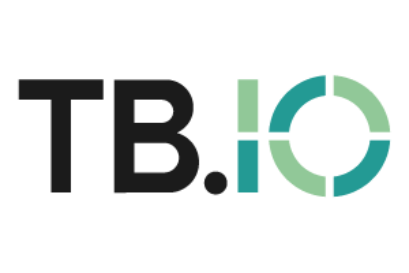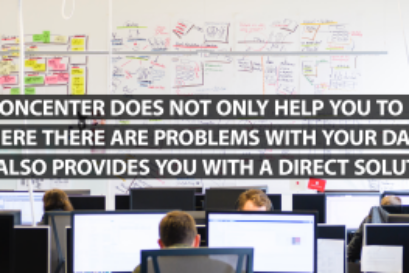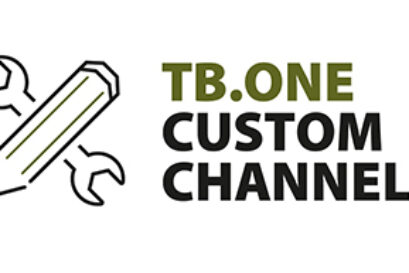Tapping potential with Customer Success Management
Customer Success Management (CSM) is a buzzword at the moment. We asked what is understood by CSM and whether the hype is justified.

Customer Success Management (CSM) is a buzzword at the moment. We asked what is understood by CSM and whether the hype is justified.
Tradebyte: Christoph, you’re the Customer Success Manager at Tradebyte. Can you explain what exactly is behind your job title?
Christoph Zöller: In our case, CSM means optimisation for existing customers. We review the accounts of existing customers and look for improvement potential. There are different “phases”. Firstly, we conduct the analysis of the respective account. Afterwards, optimisation approaches or recommendations are formulated. On request, we then help with the implementation of the recommendations in the framework of a workshop day. Finally, we carry out success monitoring and, naturally, customers receive documentation of the entire project.
In your opinion, why is a Customer Success Manager so important?
With every account, there’s a need for optimisation. That’s the case because our software is constantly developing and this innovation changes the operation of our product. In my experience, even the most well-maintained account still has potential for improvement, and this should be continually detected and utilised.
CSM entails advantages for customers, but also for Tradebyte. Which advantages are these?
The customer profits from our best practice experience and learns how to handle our software efficiently. The first priority for customers as well as for Tradebyte is clearly the increase in turnover. An increase in turnover is something every CEO likes to hear and, due to our business model, we have our very own interest in increasing our customers’ turnover. A win-win situation, so to say.
How should we imagine your tasks as CSM?
In practice, it means that, in collaboration with Key Account Management, we detect customers with a potential for optimisation. Firstly, we analyse their TB.One accounts for errors such as data maintenance errors or in the configuration of products. You could say that each error means lost turnover. We present our analysis and especially the recommendations for removing errors which we develop from that to the customers and accompany them in implementing the measures. On request, we also train customers to handle TB.One so that the troubleshooting can be carried out as efficiently and independently as possible.
But we don’t just want to suppress the symptoms, but also carry out a root cause analysis, so that these errors don’t keep creeping in. For that, it’s important that we understand how the customer approaches his work and that, with the help of best practice, we can provide tips for simplification and automation.
For example, there are customers who work directly on the surface of TB.One and therefore have to carry out a lot of manual processes. We have customers who categorise and activate thousands of products manually for several channels which causes thousands of clicks per session, which could be avoided or at least considerably reduced through a higher degree of automation. With such a high number of clicks, the error rate also increases.
Other customers already work with a great deal of automation, mainly via interfaces and there are different systems communicating with each other. With this approach, there is almost no manual work on the surface. This, on the other hand, often causes problems due to a lack of flexibility. Individual and fast adaptations to new requirements of the channels can pose challenges for the customers.
For all these different scenarios, we try to find starting points to increase efficiency for our customers, avoid errors and therefore make use of the entire turnover potential. Using diverse tools such as mass processing tools, clusters, etc. is often a very helpful measure.
Which services can a customer book in the framework of CSM? Are there special requirements which a customer has to fulfil in order to use CSM?
No – there are no special requirements. CSM can simply be booked as an extra feature. The customer can buy the overall package, meaning analysis, recommendations, workshop for the implementation of recommendations and success monitoring including documentation. But the individual components can also be booked independently. We just offer what the customer really needs or wants.
Based on your experience: When do you see the first improvements due to CSM?
A general statement is difficult, because each account functions differently and many factors influence it. An exact measurement is difficult because it’s impossible to know how the turnover would have developed without CSM. But when we talk about the measurable number of errors in the errors list, the first success can be recognised after four to eight weeks. It’s my own personal aim to reduce the errors list by half within eight weeks.
You’re currently working on developing a tool together with an external company which gives the customer more transparency concerning “key figures” within our software. Can you tell me more about that?
Exactly. This tool will give customers an overview of important performance key figures and help them to help themselves. That’s a massive help with a view to CSM and customers will be able to buy it as an additional component.
Who should a customer approach if he wants to make use of CSM?
Normally, the first contact partner for CSM is always the Account Manager. But of course you can also get information from any other contact partner in the company, for example from Support or from the Integrations Team. Additionally, you can fill out the contact form on our website www.tradebyte.com/en/csm.
And finally: What’s the ultimate reason for booking CSM?
Even with very experienced customers, improvements can be made. This potential is just waiting to be used. Mark my words: The hype is justified!


